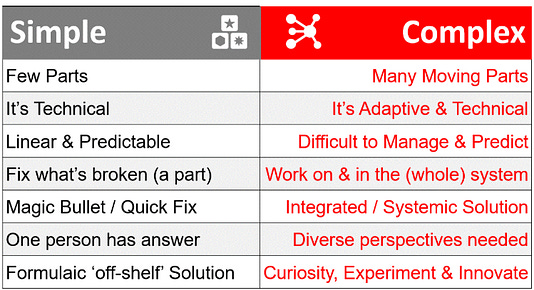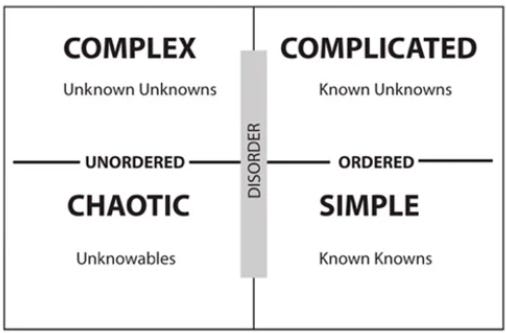Thank you for subscribing to the free version of The Strategic Networker! Please consider becoming a premium subscriber to support my writing and grow your network with insider's content and special events. You can upgrade to a paid subscription here. Why are Simple Systems so Complex?Small business owners and professionals often try to use simple pieces to complete a complex puzzle.
Recently, I decided to create a simple system to reach my social media goals. To ensure success, I prioritized simplicity and avoided unnecessary complexity that could lead to frustration and giving up on the project. My strategy was simple and straightforward. Write valuable content … post once a day … track the results. However, some days I struggled to generate content or find time to post. I also found myself overwhelmed by a rapid influx of comments to my posts. Furthermore, I was getting a wide range of conflicting advice from peers regarding which metrics to monitor and how to interpret them. How did this simple project become so complex and difficult? Ultimately, I gave up. I knew I had to face some tough questions and adjust my approach. What is the best way to design systems that are easy to use and maintain, and don't require constant updates? How can I create projects that are designed for minimal maintenance and maximum longevity? Simple Systems are the GoalWe've moved from a 'keep it simple' mindset to one that embraces complexity. It's clear that everything is getting more complicated. But research shows that the amount of complexity isn't the real issue. It's how we deal with it that makes the difference. Several factors can cause simple systems to display unexpected complexity:
Often what is simple on a small scale, becomes extremely complex on a large scale. And the simple truth is, the world is far more complicated now. Complex Systems are the OutcomeIn a truly simple system, the relationship between cause and effect is direct and predictable. Complex systems consist of many interacting parts. "Simple" often refers to the individual components. "Complex" often refers to the behavior of the system as a whole. Therefore, a system made up of simple parts can still exhibit complex behavior due to the interactions between those parts. So, what’s the answer? Simplifying Complexity is the SolutionComplex projects are manageable when approached with appropriate rigor. The danger lies in underestimating their complexity, not in the complexity itself. The Cynefin framework is a conceptual model designed to help in the decision-making processes. This framework defines five decision-making contexts: simple, complicated, complex, chaotic, and disorder: How does this help? The model improves your ability to perceive and understand workplace dynamics. Looking back at my previous social media project, what specific steps could I have taken to achieve better results? I should have begun with a step-by-step approach (the ordered) by knowing the answers to the following questions (the known knowns):
Often, we falter when we mistakenly simplify, creating risk where none existed before. Over-simplification, not the complexity itself, is the primary source of risk. Have a great weekend! - Mike 👀 WHERE TO FIND ME
|
“The illiterate of the 21st century will not be those who cannot read and write,
but those who cannot learn, unlearn, and relearn.”
-Alvin Toffler
Saturday, March 1, 2025
2025. The Strategic Networker. Why are Simple Systems so Complex
Subscribe to:
Post Comments (Atom)
Popular Posts
-
https://www.differencebetween.com/difference-between-anthropocentrism-biocentrism-and-ecocentrism/ Difference Between Anthropocentrism Bi...
-
https://optiongray.com/ham-vs-satellite-phones/ Off-Grid Communications – HAM Radio vs. Satellite Phones Written by Option Gray i...
-
Fiction and Reality. Is the planet ARAKUS (DUNE) becoming a reality. https://www.wired.com/story/why-tehran-is-running-out-of-wat...











No comments:
Post a Comment